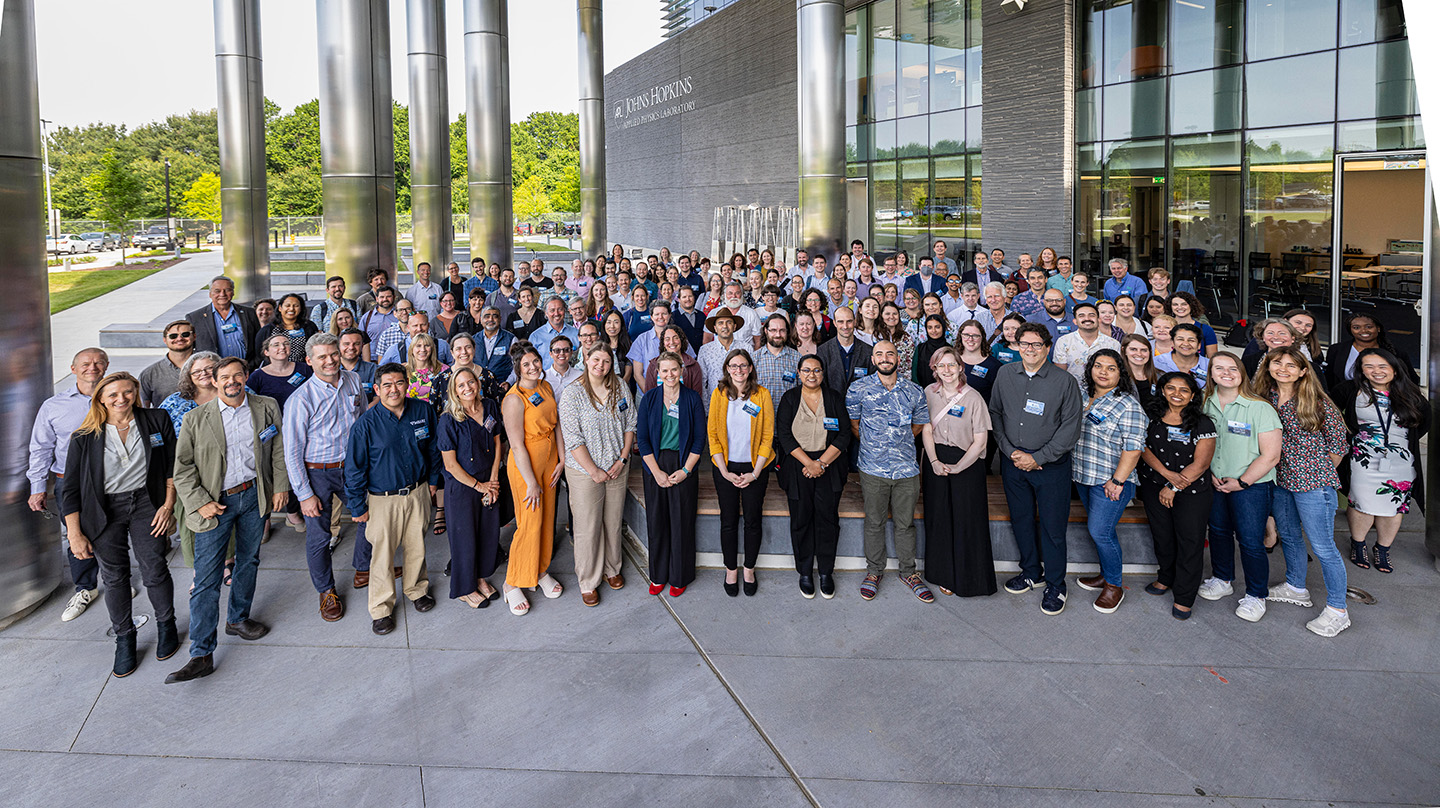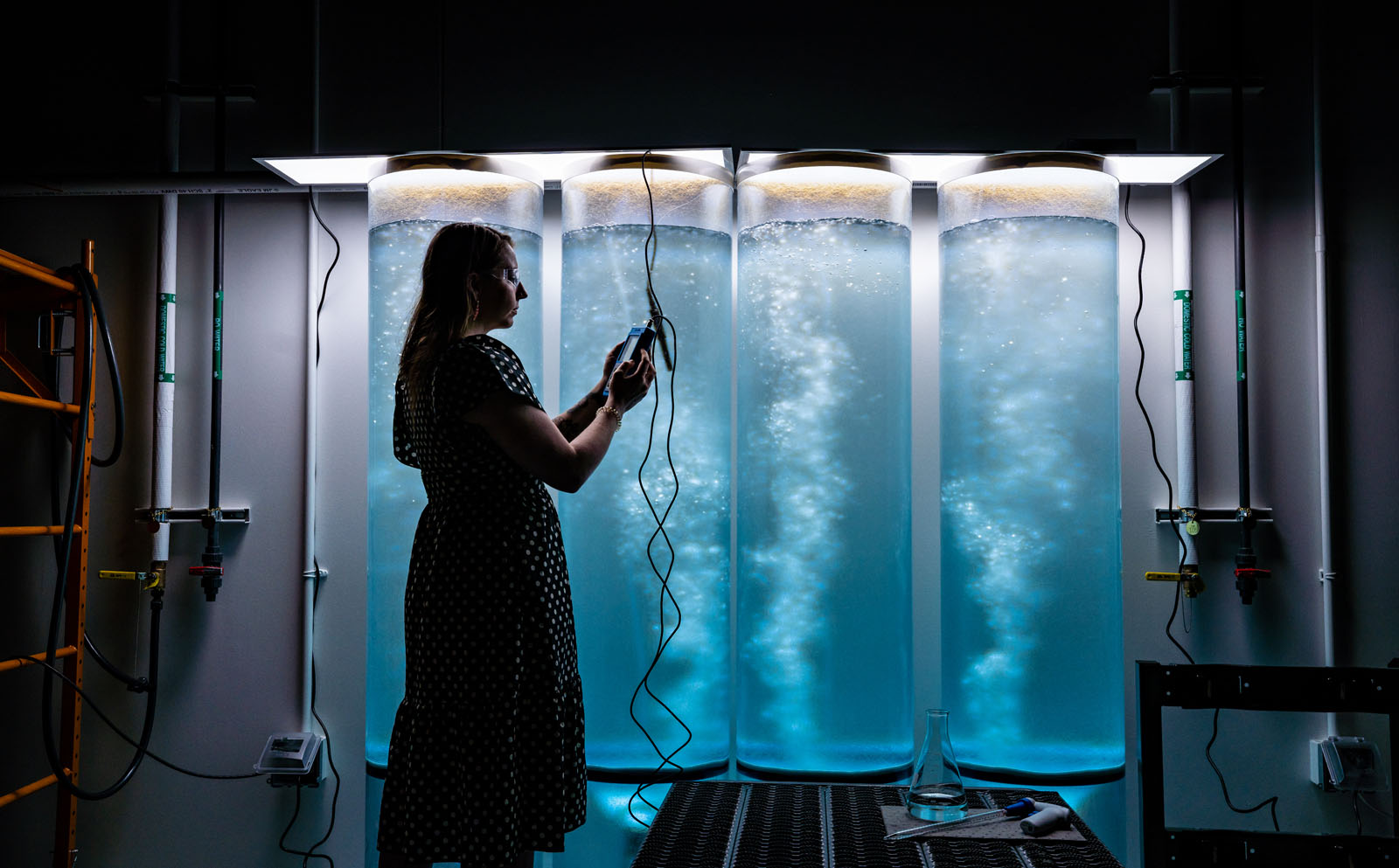News
Unveiling the Nation’s Bold Strategy to Advance Environmental DNA: Key Workshop Takeaways
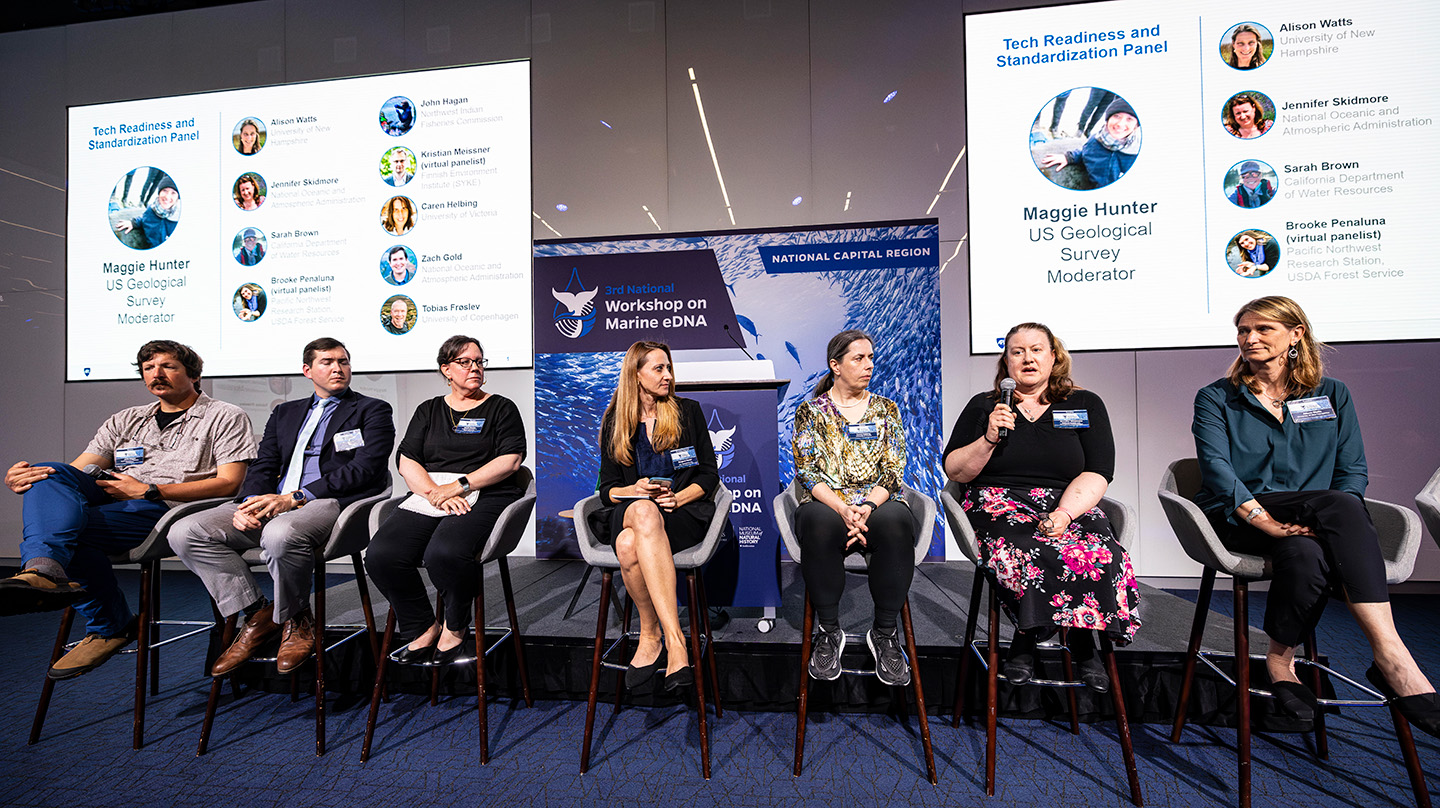
Credit: Johns Hopkins APL/Ed Whitman
Over 250 scientists, practitioners and policymakers recently met at the Johns Hopkins Applied Physics Laboratory (APL) in Laurel, Maryland, for the Third National Workshop on Marine Environmental DNA (eDNA). Their goal was to launch a new Federal Aquatic eDNA National Strategy, discuss state-of-the-art eDNA science, and identify implementation opportunities that realize the full potential of eDNA as a tool to monitor life in aquatic ecosystems.
“Within this room is a tremendous range of technical experts and decision-makers, each with application priorities that leverage a breadth of technical approaches to inform environmental observation and responses at varying time and spatial scales,” said Peter Thielen, a molecular biologist at APL and a meeting co-chair. “We’re looking forward to a series of sessions that address both immediate translational goals and a long-term vision for eDNA applications.”
With its noninvasive and easy collection, eDNA — the genetic material that organisms shed into their environment — could revolutionize how we detect, protect and manage aquatic life while also supporting national environmental priorities. Using just water samples, researchers can detect and monitor the populations and movements of aquatic species while simultaneously empowering communities to learn about and even participate in the preservation of critical waterways.
But unlocking eDNA’s full potential and widespread deployment requires significant technological advancements and coordinated implementation. Inconsistent data sharing and challenging-to-interpret results have raised concerns about the method’s utility for long-term biomonitoring, especially as groups seek to use it for developing policies.
The workshop, co-hosted by APL and the Smithsonian Institution from June 3 to 5, marked a turning point with the announcement of the nation’s new strategy for aquatic eDNA. The new 27-page document provides a roadmap to expedite eDNA’s implementation and guidance on developing common guidelines, policies and standards. The workshop’s subsequent discussions and presentations provided potential directions to put that strategy into action.
“Today, we take one step closer to converting the possibility of eDNA into routine reality — not just an idea, not just things that we have tested and are using, but at scale,” said the Honorable Jane Lubchenco, deputy director for climate and environment with the White House Office of Science and Technology Policy, who announced the new strategy. “We are really on the precipice of being able to do some amazing things.”
Here are a few key takeaways from the meeting.
The eDNA community needs a national consensus that includes shared infrastructure and tools.
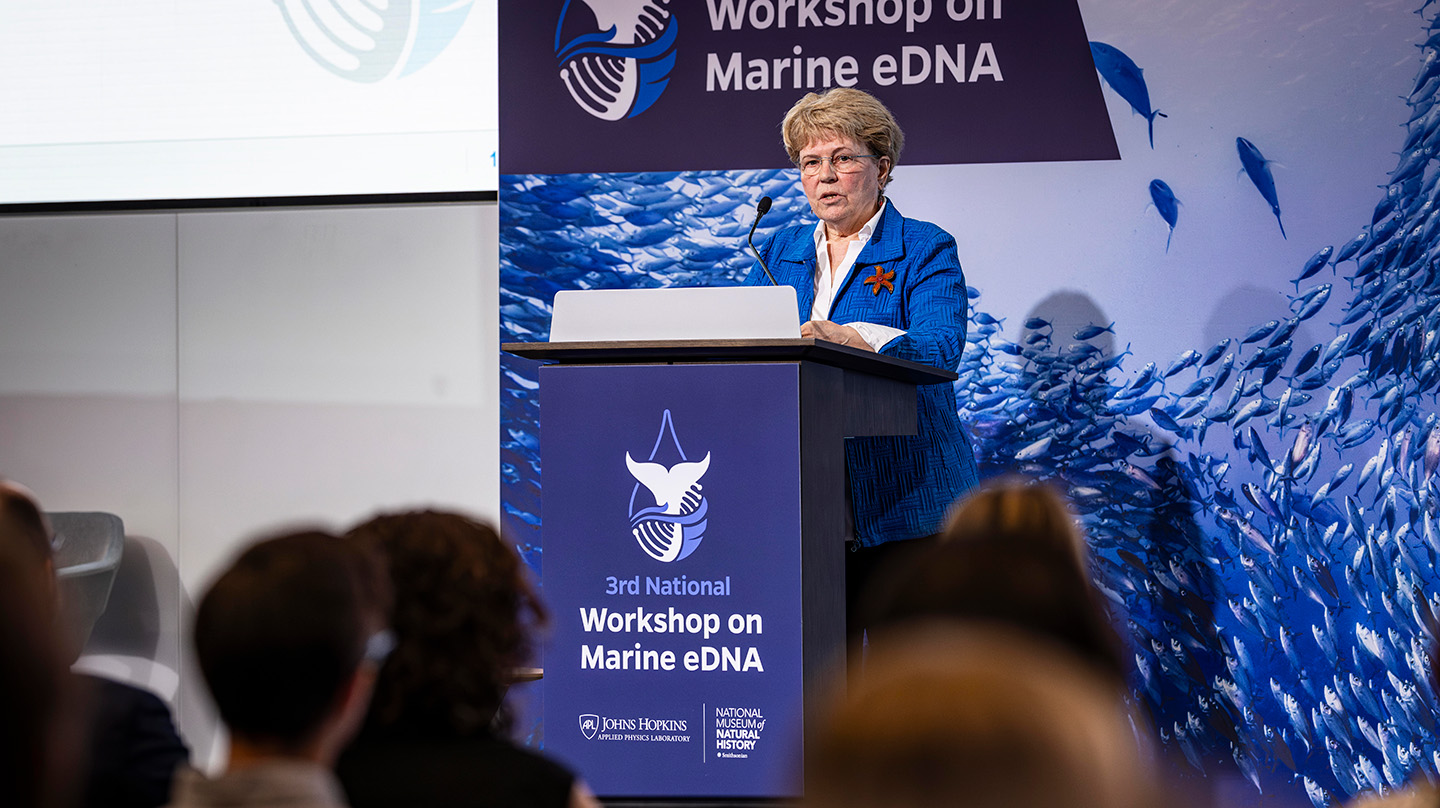
Credit: Johns Hopkins APL/Ed Whitman
The new strategy calls on federal agencies and their partners to establish a national consensus, build infrastructure and tools, and then put it all to work so the community can characterize the nation’s aquatic life.
For context, identifying species with eDNA requires first having a genetic record associated with that species in a searchable reference database. But eDNA monitoring uses a variety of technical methods to collect samples and identify a species’ DNA, which complicates efforts to standardize across the entire array of eDNA applications. Compounding the problem is the lack of a single, curated reference database representing species-specific genetic markers used for eDNA monitoring.
That’s not to say people haven’t tried to create standards and databases. The West Coast Ocean Biomolecular Observing Network, for example, is connecting researchers from nearly a dozen organizations along the nation’s West Coast to establish best practices for large-scale eDNA monitoring systems and workflow standards for easier adoption by nonexperts.
International efforts to standardize practices and unify communications also provide examples that have led to collaborative solutions. For instance, the CSA Group (formerly the Canadian Standards Association) has taken a step-by-step approach to establishing standards, first focusing on reporting requirements and lingo and then standardizing performance criteria for eDNA analyses.
An ongoing Canadian project called iTrackDNA is using a controlled multiphase comparison approach between eDNA labs to identify the key “pinch points” for potential standardization, underscoring a way to establish standards only where necessary while creating a best-practices framework for eDNA research, data collection and analysis.
eDNA technology is booming, with more capabilities constantly emerging.
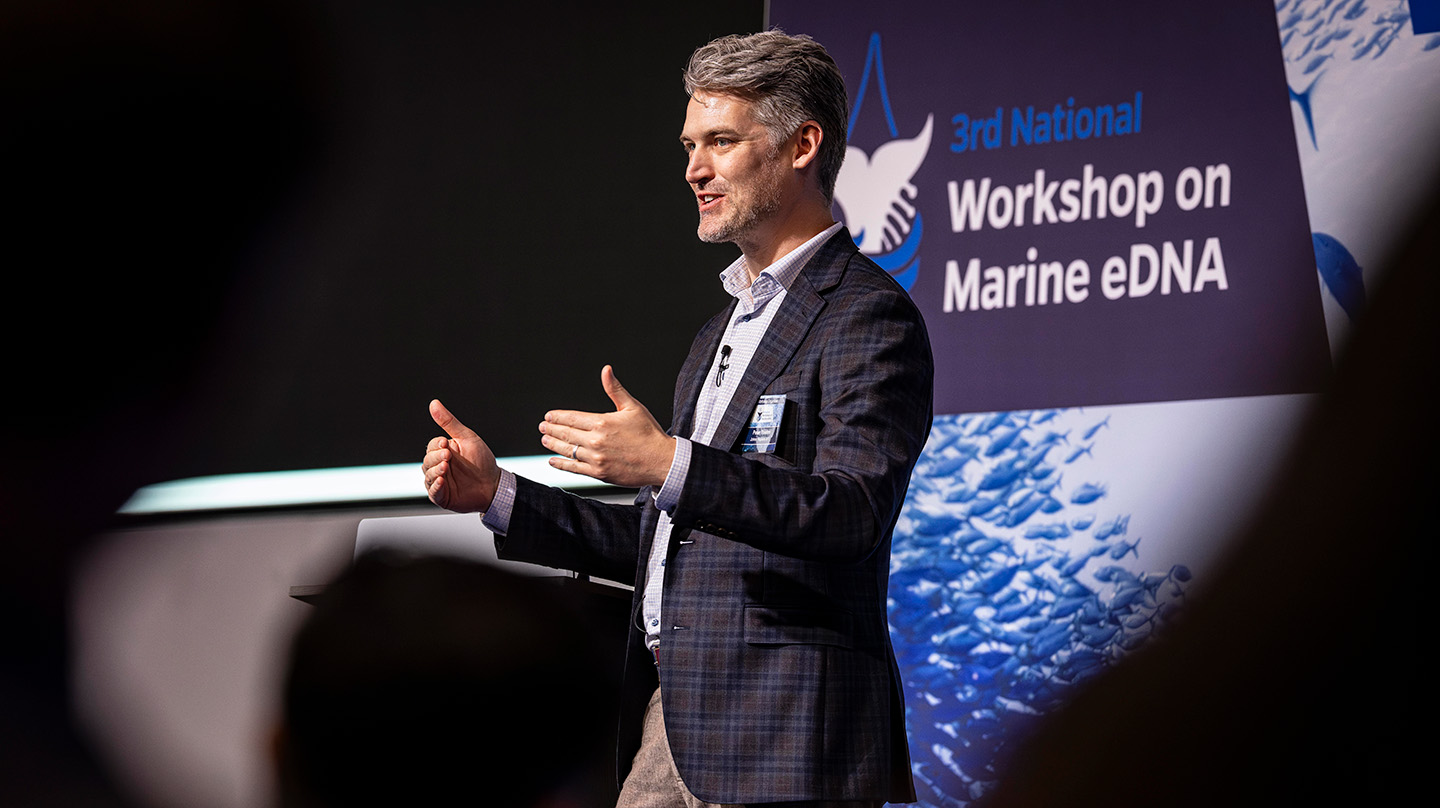
Credit: Johns Hopkins APL/Ed Whitman
eDNA instrument innovation is experiencing a renaissance. Since eDNA first emerged as a survey tool in 2008, dozens of instruments have been developed, with more entering the market each year, providing a reservoir to meet the strategy’s call for better, faster, environmentally flexible and scalable sampling devices.
Among the most promising are autonomous eDNA samplers, instruments that can be either mounted on autonomous water vehicles or built as land-based systems. They automatically collect biomaterials (including DNA) from water, and the strategy envisions distributing these platforms across the nation for a biomonitoring capability akin to modern weather observation and forecasting systems.
“We know that this technology is going to improve,” said event co-chair Christopher Meyer, research zoologist and lead of the Smithsonian National Museum of Natural History’s Ocean DNA initiative. “What was thought to be science fiction yesterday turns out to be science reality today. Therefore, we need to avoid technology lock-in and allow innovation as we deploy and implement toolsets.”
Beyond technology, new emerging applications of eDNA and other genetic material are coming to the forefront. Researchers are systematically determining the biological and physical mechanisms that lead to the degradation and transport of eDNA. For example, APL’s Jeremy Bruch, a physical oceanographer, has started using large-scale physical oceanography models to visualize the movement and loss of eDNA on ocean-basin scales, a valuable capability that will help advance understanding of eDNA movement after it is shed from an organism.
Others are investigating how to determine a species’ local population size based solely on models and sampled eDNA. And the effort to use environmental RNA (eRNA) as a supplemental or even alternative genetic marker has shown early promise for select applications. Although RNA’s degradation is significantly faster than DNA (on the order of hours rather than days), it has the potential to provide population demographic details that DNA cannot, such as age structure, sex ratios, stress and health.
eDNA technology needs to be made more accessible to the broader community.
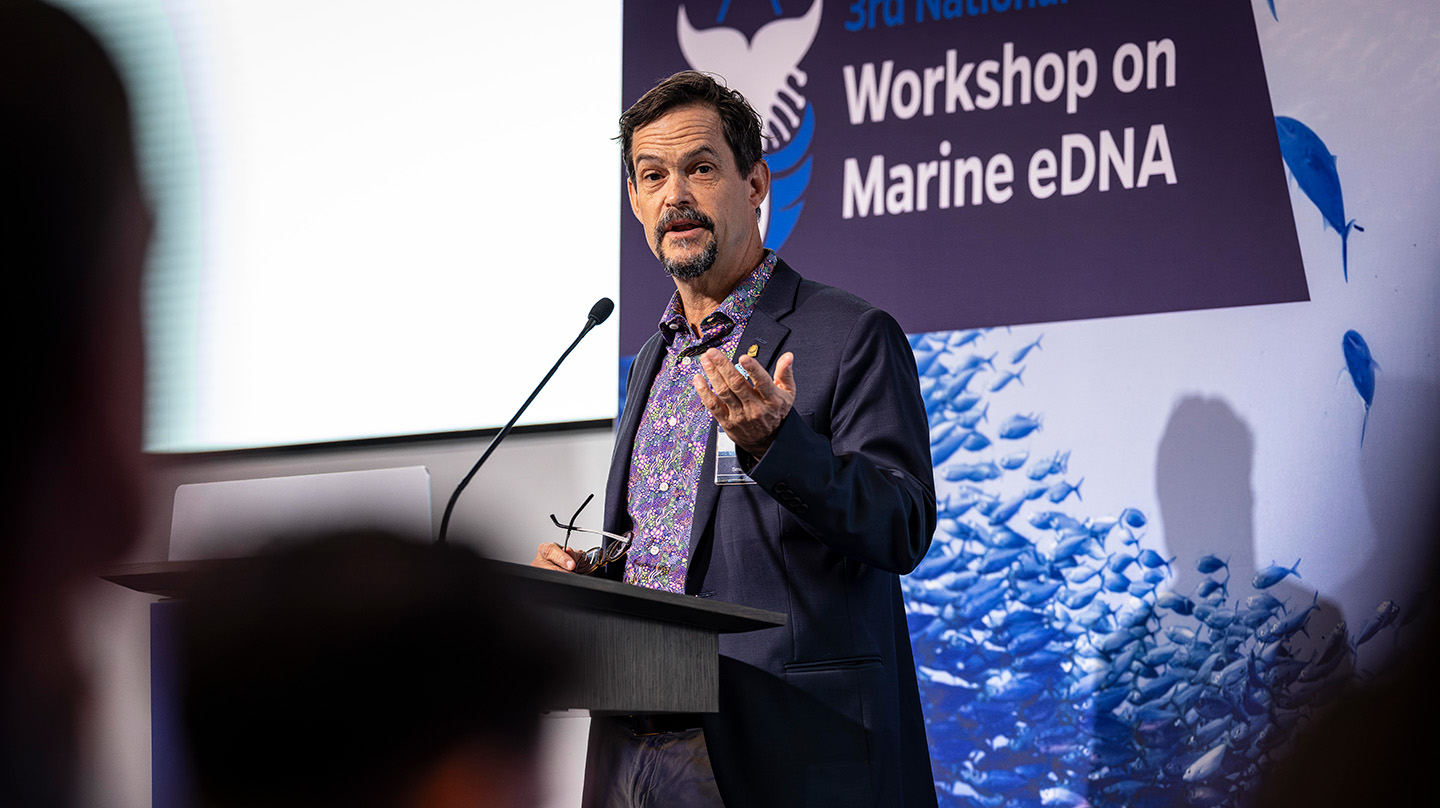
Credit: Johns Hopkins APL/Ed Whitman
Among molecular biologists and geneticists, eDNA technology has become a reliable and familiar technique for biodiversity monitoring, detection of rare and elusive species, management of invasive species, and tracking of endangered species, among many other uses.
But for nonexperts or those lacking experience working with DNA, there’s a significant barrier to entry. Several presentations argued the primary issue is that information isn’t being communicated or presented effectively from experts to beginners, in turn undermining scientific trust in the method. Newcomers need guidance on how and where to collect samples, what labs are qualified to analyze the data they are specifically interested in, and which genetic markers will work best for their species of interest.
The New Zealand Department of Conservation provided an example that has attempted to bridge that gap. It developed a community science program that allowed ordinary people to use low-tech kits to collect eDNA samples that they could send for analysis. Results are uploaded to an interactive system that graphically displays the diversity of biological life found at that sampled location, which in turn is used to quantify the health of the local aquatic ecosystem. The result is a system that politicians, decision-makers and even children can understand.
The new U.S. national strategy doesn’t specify such a program but does turn focus to fostering the growth of a broad and knowledgeable workforce. “Targeted training and education are really needed to bolster expertise and advance U.S. competitiveness in a way that’s informed by diversity, equity, inclusion and accessibility principles,” Lubchenco emphasized. That combined with investments in infrastructure “will support research and development and transition eDNA science to sustained operations.”
